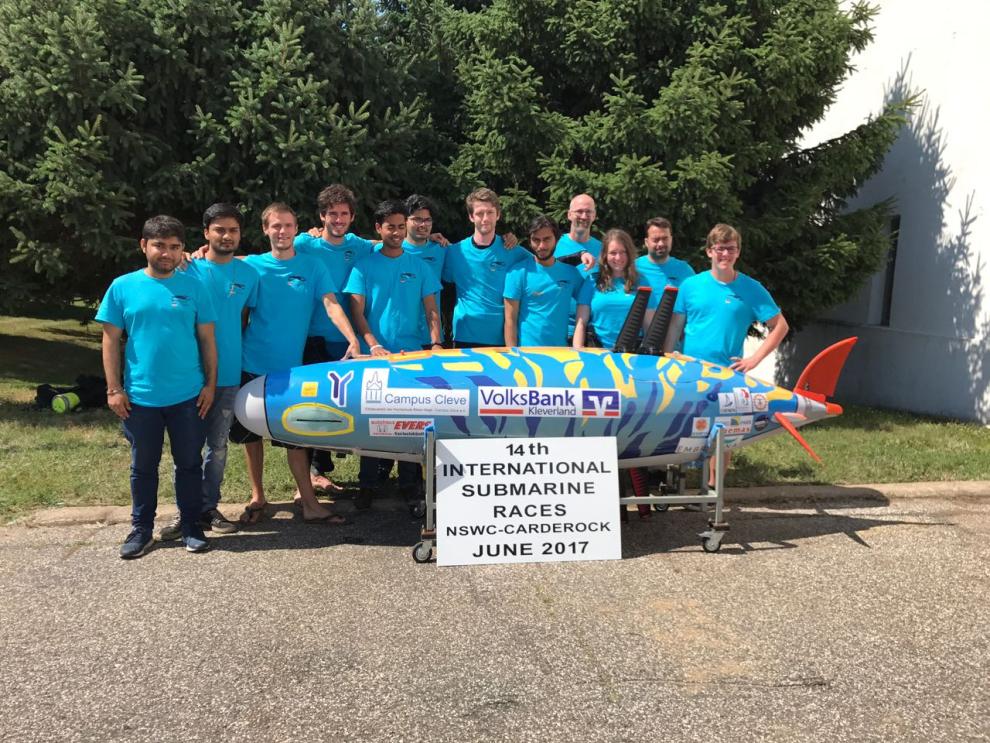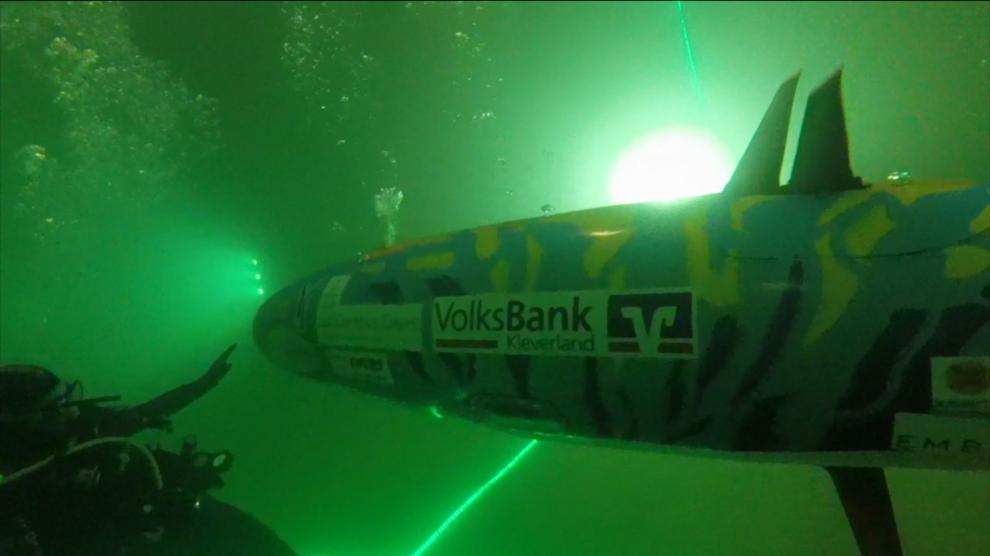HSRW Submarine Team wins once again at the International Submarine Race in Washington, D.C.
Team spirit and dedication have once again paid off: The crew behind the University’s submarine Rivershark II returns to Germany with two bronze medals and a ‘triumph of the hearts’ from this year's Submarine Race in Washington, D.C., USA.
Students of the Faculty of Technology and Bionics in Kleve successfully competed with their self-designed and self-built submarine Rivershark II against a total of 20 teams from the US, Canada, Mexico, Great Britain and the Netherlands. One of the team’s two bronze medals was awarded for top speed among non-propeller designs, the other bronze medal was awarded for innovation, in particular for the sonar-driven autopilot using an artificial lateral line system, a genuine bionic element of the Rivershark II design inspired by the anatomy of aquatic vertebrates such as fish.
These achievements are a great reward for the team's hard work under the support and tutelage of Professor William Megill. Eleven students were able to accompany their innovative underwater vehicle to Washington and celebrate the team’s success on location. Five more team members had their fingers crossed as they followed the competition from Germany. It was quite a good thing that so many of the crew were able to come along, as their collective know-how was needed to fix some unexpected technical problems after the submarine scraped against a wall of the basin.
While the HSRW Submarine team was busy repairing the Rivershark II, the challenges facing the Mexican team were of an entirely different nature: Their submarine was ‘stranded’ at US customs and nobody knew whether it would be released in time for the competition. These different adversities helped both teams to develop a sense of solidarity and camaraderie. The Mexican divers, for example, teamed up with the exhausted German team members to take turns plunging into the cold and murky water of the basin at the US Naval Base in order to get Rivershark II back on course.
Team spirit, ambition as well as the knowledge that all those months and effort put into constructing Rivershark II – including transport to Washington – had not been in vain, helped participating students such as submarine pilots Leonie Wesener, Alam Sayied and Tobias Riphaus to surpass their previous accomplishments.
When finally the Mexican submarine could enter the competition towards the end, the bond between the Mexican and German teams was truly put to the test. The team of Rhine-Waal University of Applied Sciences would have had the opportunity to secure an overall victory in the category ‘Speed’ in a final race, but the remaining time allowed for only one last team to compete. That meant either Germany or Mexico could enter the last race and the decision ultimately went to Mexico. The HSRW Submarine Team was disappointed at first, but solidarity was more important. Despite all adversities, the German team succeeded in securing a place on the winners’ podium and everyone agrees that the team’s bronze medals mean far more than a top finish for speed.
In particular, winning bronze for innovation shows not only the excellent cooperation between mechanical and bionics engineers, but also how the HSRW Submarine Team - an international crew in itself - was committed to working together to accomplish its ambitious goals.
Would you like to read more about the exciting days at the competition (in English) and watch a video about it? Then please visit the online journal of Professor Megill at http://hsrw.oceantechlab.de/


